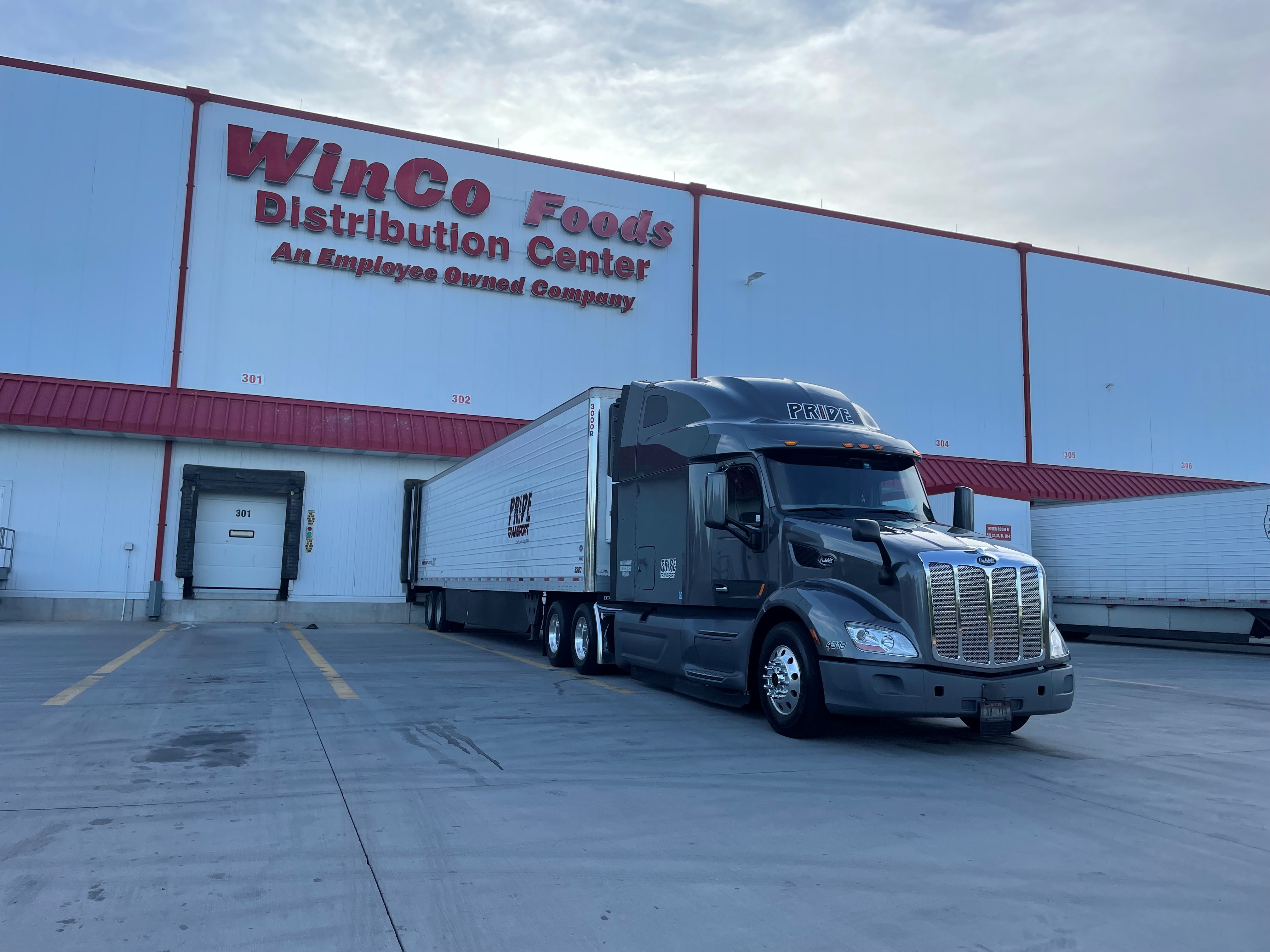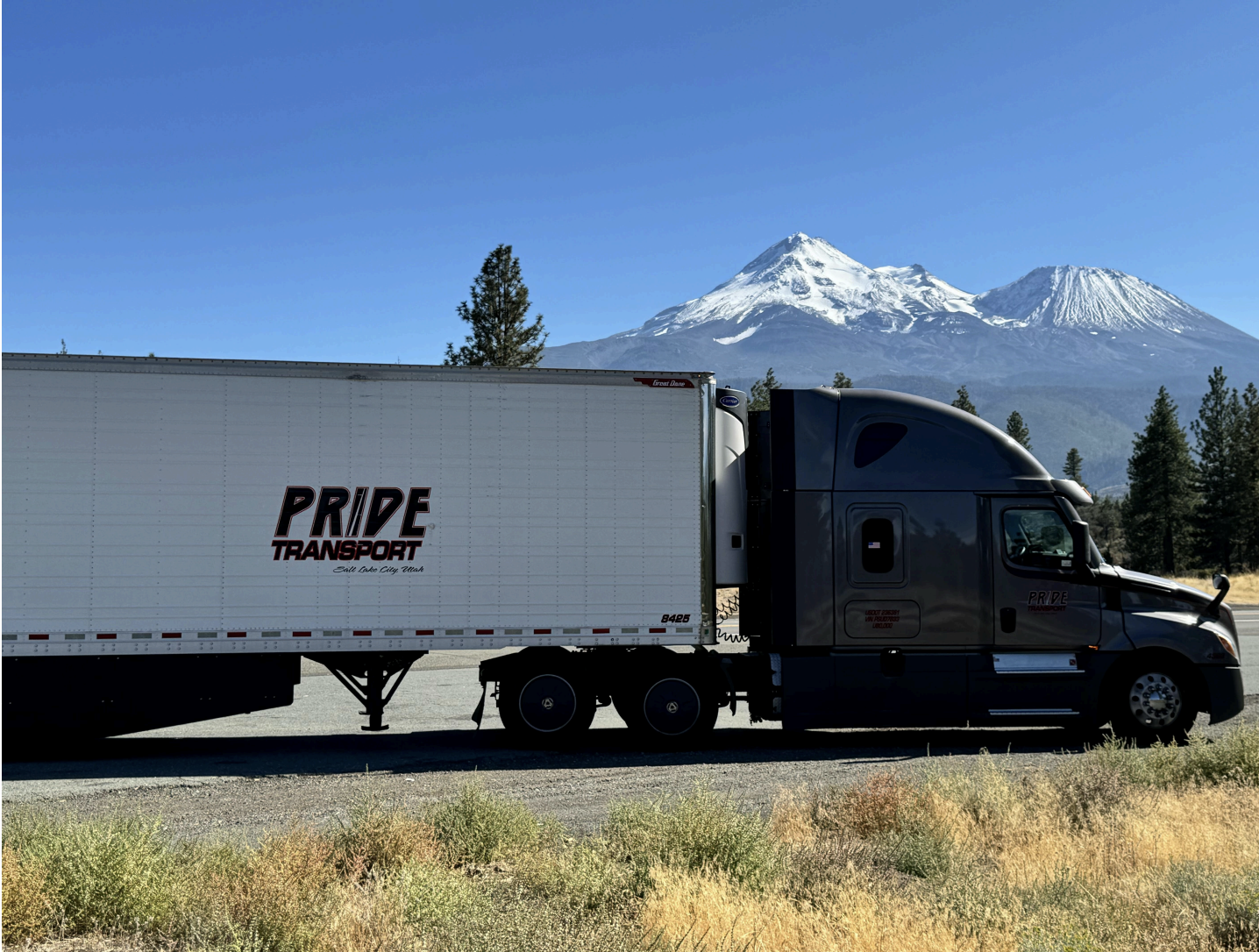by Pride Transport | Sep 25, 2025
If you’ve earned your Class B Commercial Driver’s License (CDL), you’re already on the road to a solid driving career. A Class B CDL opens the door to several driving jobs, particularly in local and regional delivery, construction support, and public transit. It’s a great place to start if you're looking for reliable hours and consistent work.
But if you're aiming for long-haul freedom, higher earning potential, and a career with room to grow, it might be time to consider going one step further and earning your Class A CDL.
At Pride Transport, we don’t offer positions for Class B drivers. Why? Because we specialize in long-haul freight and over-the-road (OTR) trucking, both of which require a Class A license. That doesn’t mean we don’t respect where many drivers begin their journey. In fact, we believe understanding what’s possible with a Class B license is the first step in planning a more rewarding future behind the wheel.
Upgrading from a Class B to a Class A license doesn’t just change what you drive, it changes your career trajectory. With a Class A CDL, you gain access to longer routes, more advanced equipment, and significantly better pay structures. It's a move that opens doors across the country, whether you're looking for financial growth, career stability, or the chance to explore life on the road.
What Is a Class B CDL?
A Class B CDL allows you to operate a single vehicle with a gross vehicle weight rating (GVWR) of 26,001 pounds or more, provided you are not towing a trailer heavier than 10,000 pounds. This license typically covers straight trucks, box trucks, and similar vehicles that do not require the handling skills of combination vehicles like tractor-trailers.
The FMCSA defines Class B CDL parameters here, and most states follow these federal guidelines.
Because it doesn’t include authorization to drive combination vehicles, a Class B CDL is limited in scope but useful for drivers who want to stay local, work structured hours, or break into the transportation field.
What Can You Drive With a Class B CDL?
While more limited than a Class A license, a Class B CDL still qualifies you for essential roles in logistics, construction, and public service. Below are some of the most common types of vehicles and jobs available with a Class B license:
1. Delivery Drivers (LTL and Local Freight)
Many delivery companies, including UPS, FedEx, and food distributors, employ Class B drivers for local or less-than-truckload (LTL) freight. These jobs typically involve:
- Operating box trucks or straight trucks
- Making multiple stops per route
- Loading/unloading cargo by hand or with pallet jacks
- Following tight delivery schedules within a specific service area
These roles are often based on hourly pay, and while they offer consistency, they tend to be physically demanding and require quick turnarounds.
2. Bus Drivers
Operating a school bus, shuttle, or city transit bus requires a Class B CDL with a passenger (P) endorsement. These jobs come with responsibility for passenger safety, daily route consistency, and often early or split shifts.
Bus driving is especially common in:
- School districts
- Urban transit systems
- Airport and hotel shuttle services
- Tourism companies
3. Dump Truck Drivers
A Class B CDL also qualifies you to drive dump trucks, especially for construction or landscaping projects. These jobs may involve:
- Hauling soil, gravel, or debris
- Operating in off-road conditions
- Working early mornings or in shifts
- Short-distance, high-frequency hauls between job sites
This work is physically intensive and often seasonal, depending on weather conditions and regional demand.
4. Utility and Maintenance Vehicles
Municipal and utility companies frequently hire Class B drivers to operate:
- Street sweepers
- Bucket trucks
- Garbage/recycling trucks
- Sewer and water maintenance vehicles
These jobs are public-facing and sometimes require additional duties like system checks or repair assistance. While they offer regular hours and good benefits, they rarely provide long-term income growth unless paired with additional training or certifications.
5. Tow Truck Operators
Many tow truck drivers operate under a Class B license, especially for medium-duty wreckers that do not tow large combinations. These jobs often require working with insurance claims, road hazard situations, and customer service. While the work is critical, it’s often reactive, meaning long hours, emergency calls, and inconsistent schedules. It’s a valuable role, but not one with the flexibility or long-term income potential offered by OTR positions.
Class B vs. Class A CDL: What’s the Difference, and Why It Matters
Both licenses have their place, but understanding their limitations and advantages is critical if you're planning a career behind the wheel. If you're currently driving with a Class B CDL, or thinking about starting there, here's how it compares to a Class A CDL across the areas that matter most.
1. Pay and Earning Potential
Class B CDL:
Most Class B roles are hourly or salaried, meaning there's a cap on how much you can earn, regardless of efficiency or distance. Bonuses and incentives are rare. Averages range from $48,000 to $59,000 per year, depending on location and employer.
Class A CDL:
Class A drivers are typically paid by cents per mile (CPM). At Pride Transport, we offer competitive CPM pay that gives our drivers earning power based on performance and miles.
Top Class A drivers can earn $58,000 to $93,000 annually, with the opportunity for six figures with experience and dedication.
2. Driving Distance and Lifestyle
Class B CDL:
Most jobs are local or regional, with fixed routes and short-haul deliveries. This structure often means being home daily, but it also limits exposure to high-mileage routes that pay more.
Class A CDL:
Class A drivers have access to long-haul (OTR) jobs, giving them the ability to see the country, maximize miles, and gain flexibility in schedule and location. While OTR requires more time away from home, it also leads to greater independence and bigger paychecks.
3. Equipment and Freight Types
Class B CDL:
You’ll be limited to single-unit vehicles, including box trucks, straight trucks, and buses. You cannot haul full-size trailers, doubles, or combination vehicles, which are central to the freight industry.
Class A CDL:
You can drive tractor-trailers, flatbeds, reefers, tankers, and even specialty vehicles like doubles/triples (with proper endorsements). Hauling trailers over 10,000 pounds requires not just a Class A license, but also enhanced knowledge of weight distribution, braking systems, and trailer maneuvering. These skills are highly valued in the industry and lead to better job opportunities, including specialized hauls that pay premium rates.
4. Career Growth and Job Stability
Class B CDL:
While you can find stable jobs, there’s limited upward mobility. Most Class B drivers remain in the same job category unless they pursue additional licensing or certifications.
Class A CDL:
Class A opens doors to:
- Specialized hauling
- Dedicated lanes
- Team driving
- Lease-purchase and owner-operator programs
Many companies reserve their most valuable routes, including dedicated customer accounts and guaranteed-mile runs, for drivers with Class A credentials. If you're looking for long-term career stability, a Class A license puts you in the best position to grow with a company.
5. Training and Licensing Requirements
Class B CDL:
Class B programs are generally shorter and less expensive, making them ideal for drivers who want a quick entry point into the workforce. However, if you want to grow your career, you’ll likely need to retrain later.
Class A CDL:
Training is more comprehensive, and many schools offer Class B to Class A upgrade programs, allowing you to fast-track the transition. Most upgrade programs last two to four weeks, depending on the school and your availability. Some programs even offer online theory training to speed up the process.
6. Job Demand and Market Value
Class B CDL:
Local delivery services, municipal fleets, and waste services rely on Class B drivers. While these jobs are vital, they account for a smaller portion of the transportation workforce.
Class A CDL:
Class A drivers are the backbone of long-haul logistics, keeping supply chains running across the country. The demand for Class A drivers remains high, especially in freight-heavy industries like retail, food distribution, and manufacturing.

How to Upgrade From a Class B to a Class A CDL
If you're ready to take the next step, here’s what the typical upgrade path looks like:
Steps to Upgrade:
- Enroll in a certified Class A CDL training program
- Pass the written knowledge exams for Class A vehicles
- Complete behind-the-wheel training in a combination vehicle
- Pass the Class A skills test, which includes pre-trip inspection, backing maneuvers, and a road test
You don’t have to start from scratch. Many CDL schools offer “bridge” programs designed specifically for Class B license holders. These are faster, more affordable, and focused on combination vehicle operation.
Start Planning for a Class A Career
Class A drivers aren’t just earning better pay, they’re building careers with options. Whether you’re looking to become a trainer, switch to dedicated freight, or one day become an owner-operator, it all starts with the right license and the right carrier.
At Pride Transport, we’ve helped countless drivers advance from local jobs to rewarding OTR careers with better pay, better benefits, and better support.
If you're working toward your Class A CDL, or already have one, Pride Transport is ready to help you thrive. Apply today.
